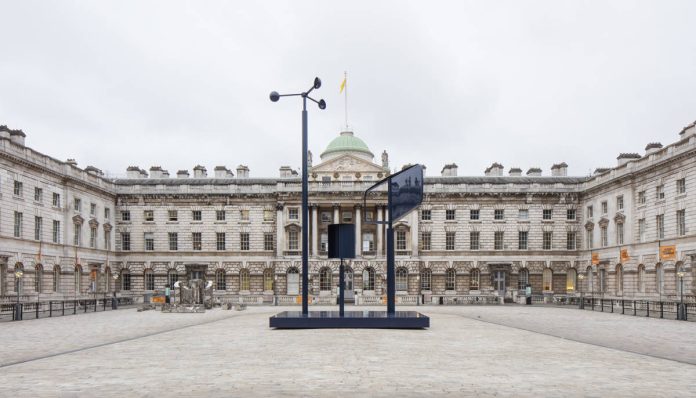The first edition of the London Design Biennale is being held in the dynamic setting of Somerset House, which is currently celebrating the 500th anniversary of the publication of Thomas More’s Utopia. Indeed, the London Biennale is inspired by the theme of Utopia by Design, directly connected to Utopia 2016: A Year of Imagination and Possibility, which is pervading Somerset House: an exploratory journey through cities of the future, homages to the unfulfilled utopia of the past and innovative solutions for the problems of the 21st century.
For three weeks (until 27 September), 37 countries are contributing to enriching this cultural landscape with installations, protoypes and projects – vibrant exhibitions that include kinetic sculptures, digital installations, pop-up restaurants, performances and virtual reality renderings of the future.
The aim of the Biennale? To explore and inspire the role of design in our shared future.
Visitors can enjoy a pomegranate juice, taste a falafel or stop off at the barber in the meticulous recreation of typical Beirut neighbourhoods by Annabel Karim Kassar. Influence mischer’traxler’s precarious light sculpture as it moves, dims and brightens in reaction to its spectators (Austria); eat the conceptual food of Chung-Ho Tsai in Rain Wu’s tranquil forest-like setting (Taiwan); relax in the mouths of ferocious beasts courtesy of Porky Hefer (South Africa) or wander around the Santander of 2100 in a virtual reality realisation of the smart city’s future (Spain).
Underlying much of the Biennale are a number of pressing, universal issues that designers around the world are seeking to address, among them sustainability, migration and conflict, pollution, technological innovation, water scarcity and social equality:
Mexican architect Fernando Romero explores the ‘transnational’ border city as a solution for migration and increasing populations; Israel presents an innovative proposal for how first aid might be distributed in disaster zones; a trio of Nigerian designers look at how environmental balance might be restored to the Niger Delta and Australian Brodie Neill draws attention to – and finds beauty in – ocean-based plastic waste.
The UK is represented by London-based design duo Edward Barber and Jay Osgerby. Curated by the Victoria and Albert Museum, their 14-metre kinetic sculpture and exploration of the nation’s relationship with wind energy will occupy the centre of the iconic Edmond J. Safra Fountain Court.







